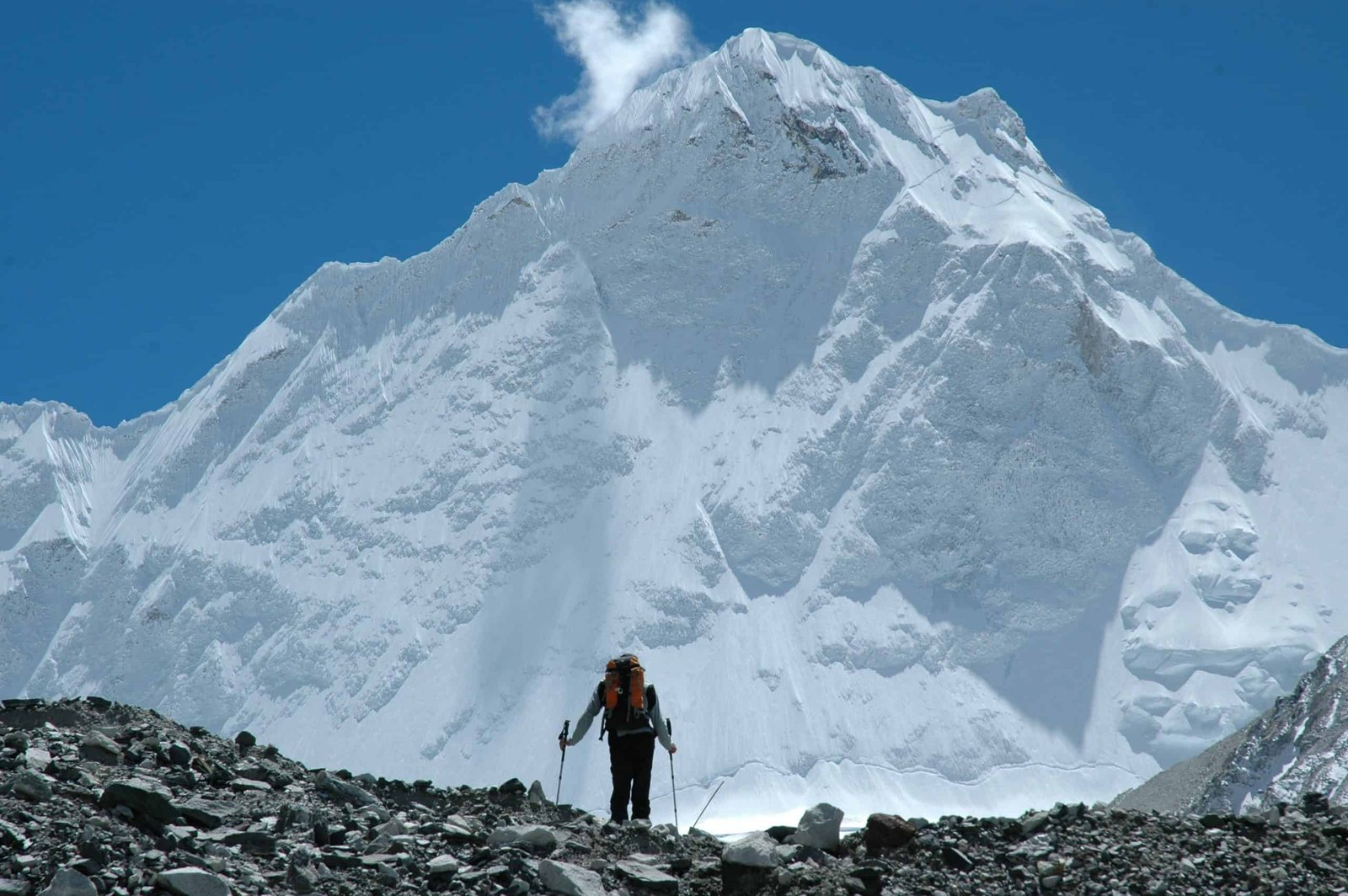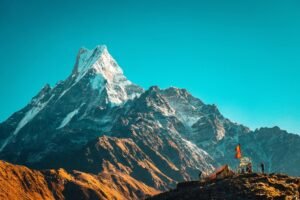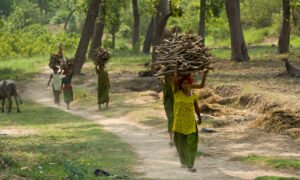Nestled between the plains of the Indian subcontinent and the Tibetan Plateau, the Himalayas stand as the world’s highest and most majestic mountain range. Spanning over 1,500 miles across multiple countries including India, Nepal, Bhutan, and Tibet, the Himalayas offer a plethora of trekking opportunities that vary dramatically with the changing seasons. In this extensive guide, we delve deep into the nuances of each season, exploring the optimal times to embark on a trekking adventure in this awe-inspiring region.
Introduction to Trekking in the Himalayas
Trekking in the Himalayas is not merely a physical challenge; it is an immersive journey through diverse landscapes, rich cultures, and unparalleled natural beauty. From gentle walks through rhododendron forests to high-altitude expeditions to base camps and passes, the Himalayas cater to trekkers of all levels and interests. Each season paints a different picture of this mountainous wonderland, offering unique experiences that range from blooming flora to snow-covered peaks.
Factors Influencing the Best Time to Trek in the Himalayas
Several factors influence the ideal timing for trekking in the Himalayas, including:
- Weather Patterns: Understanding the seasonal weather patterns is crucial for planning a trek that ensures safety and enjoyable conditions.
- Trekking Routes: Different routes vary in accessibility and conditions throughout the year, influenced by altitude and geographic location.
- Cultural Festivals: Many trekkers choose to coincide their trips with local festivals, adding a cultural dimension to their trekking experience.
- Flora and Fauna: Each season brings its own display of flora and opportunities for wildlife sightings, influencing the aesthetic and ecological experience of trekking.
Best Time to Visit the Himalayas by Season
Spring (March to May)
Spring is a favored season for trekking enthusiasts, characterized by:
- Rhododendron Blooms: Witness the vibrant colors of rhododendron flowers in bloom, especially in regions like the Annapurna and Langtang areas of Nepal.
- Moderate Temperatures: Enjoy comfortable daytime temperatures and milder nights, making trekking pleasant at lower altitudes.
- Clear Skies: Typically clear skies offer excellent visibility of mountain peaks, enhancing the overall trekking experience.
Summer (June to August)
Summer in the Himalayas brings warmer temperatures and the onset of the monsoon season:
- High-altitude Treks: Trekking in rain-shadow regions like Ladakh (India) and Mustang (Nepal) remains feasible during this time.
- Green Landscapes: Lush greenery and blooming wildflowers adorn lower altitude regions due to monsoon rains.
- Rainfall: Expect heavy rainfall in many parts of the Himalayas, particularly affecting central and eastern Nepal and Bhutan.
Autumn (September to November)
Considered the best overall season for trekking, autumn combines favorable weather conditions with stunning landscapes:
- Post-Monsoon Clarity: Crisp mountain views and clear skies follow the monsoon season, making it ideal for high-altitude treks.
- Festivals: Experience cultural festivals such as Dashain and Tihar in Nepal or Diwali in India, adding cultural richness to your trekking adventure.
- Moderate Temperatures: Enjoy comfortable daytime temperatures and cooler nights, creating pleasant trekking conditions across all altitudes.
Winter (December to February)
Winter trekking offers a unique experience of serene snow-covered landscapes and fewer crowds:
- Snowy Peaks: Witness breathtaking vistas of snow-covered peaks, particularly in regions like Uttarakhand (India) and the Everest region (Nepal).
- Cold Temperatures: Prepare for sub-zero temperatures at higher altitudes, requiring appropriate cold-weather gear and acclimatization.
- Quiet Trails: Experience quieter trails with fewer tourists, although some routes may be inaccessible due to heavy snowfall.
Best Time to Visit Specific Regions for Trekking
Nepal
- Everest Region: Optimal trekking seasons include autumn (September to November) and spring (March to May) for treks to Everest Base Camp and other routes in the Khumbu region.
- Annapurna Region: Autumn and spring offer ideal trekking conditions with clear skies and moderate temperatures. Spring is renowned for its rhododendron blooms.
India
- Ladakh: Summer (June to September) is the primary trekking season due to accessibility and pleasant weather in this high-altitude desert region.
- Uttarakhand: Spring and autumn are optimal for trekking in Uttarakhand, offering opportunities to explore the Garhwal and Kumaon regions amidst stunning Himalayan vistas.
Bhutan
- Autumn and Spring: These seasons provide the best weather conditions for trekking in Bhutan, featuring clear skies and mild temperatures ideal for exploring the kingdom’s pristine landscapes.
Tibet
- Spring and Autumn: These seasons are recommended for trekking in Tibet, offering clear weather and suitable conditions for high-altitude trekking around Mount Kailash and other sacred sites.
Planning Your Trekking Trip to the Himalayas
Effective planning is essential for a successful trekking trip in the Himalayas:
- Route Selection: Research and choose trekking routes based on your fitness level, experience, and desired scenery. Consider factors such as altitude gain, trekking duration, and acclimatization requirements.
- Weather Monitoring: Stay informed about weather forecasts for your chosen trekking period and region. Prepare for changes in weather conditions, especially in high-altitude environments.
- Permits and Regulations: Obtain necessary permits and permissions well in advance, especially for restricted areas or national parks where trekking is regulated.
- Packing Essentials: Pack appropriate clothing, footwear, camping gear (if necessary), and essential items like sunscreen, insect repellent, and a first aid kit tailored to the season and region of your trek.
Choosing the best time to visit the Himalayas for trekking depends on various factors, including weather conditions, trekking routes, and personal preferences. Each season offers its own unique advantages and challenges, ensuring that trekkers can find an ideal time to explore this awe-inspiring mountain range. By understanding the seasonal variations and planning accordingly, you can maximize your enjoyment of trekking in the Himalayas and create unforgettable memories of adventure amidst some of the world’s most spectacular landscapes.
In conclusion, the Himalayas beckon adventurers with their diverse landscapes and cultural tapestries, offering trekking opportunities that cater to every season and trekker’s preference. Whether you seek the vibrant blooms of spring, the clear skies of autumn, or the pristine solitude of winter, the Himalayas promise a trekking experience that combines physical challenge with spiritual





